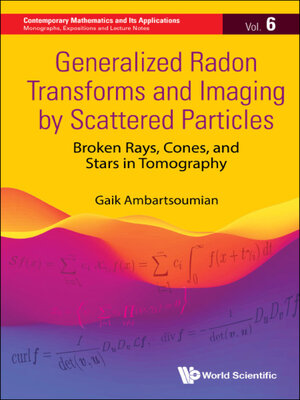Generalized Radon Transforms and Imaging by Scattered Particles
ebook ∣ Broken Rays, Cones, And Stars In Tomography · Contemporary Mathematics and Its Applications: Monographs, Expositions and Lecture Notes
By Gaik Ambartsoumian

Sign up to save your library
With an OverDrive account, you can save your favorite libraries for at-a-glance information about availability. Find out more about OverDrive accounts.
Find this title in Libby, the library reading app by OverDrive.



Search for a digital library with this title
Title found at these libraries:
| Library Name | Distance |
|---|---|
| Loading... |
A generalized Radon transform (GRT) maps a function to its weighted integrals along a family of curves or surfaces. Such operators appear in mathematical models of various imaging modalities. The GRTs integrating along smooth curves and surfaces (lines, planes, circles, spheres, amongst others) have been studied at great lengths for decades, but relatively little attention has been paid to transforms integrating along non-smooth trajectories. Recently, an interesting new class of GRTs emerged at the forefront of research in integral geometry. The two common features of these transforms are the presence of a 'vertex' in their paths of integration (broken rays, cones, and stars) and their relation to imaging techniques based on physics of scattered particles (Compton camera imaging, single scattering tomography, etc).This book covers the relevant imaging modalities, their mathematical models, and the related GRTs. The discussion of the latter comprises a thorough exploration of their known mathematical properties, including injectivity, inversion, range description and microlocal analysis. The mathematical background required for reading most of the book is at the level of an advanced undergraduate student, which should make its content attractive for a large audience of specialists interested in imaging. Mathematicians may appreciate certain parts of the theory that are particularly elegant with connections to functional analysis, PDEs and algebraic geometry.







